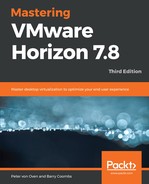So, let's start by looking at how the different rendering models work. With a desktop PC, the applications, operating system, and graphics drivers work together locally to deliver the best performance on that PC. This is local client rendering.
If we move to a client rendering model, we now introduce a network between the components. Images are now sent across the network to the endpoint device, where they are processed locally using the resources of that endpoint device. Using this model introduces degradation of the application performance as it travels across the network from the host server to the client, and you would still need a powerful Windows-based endpoint device.
So, what about host rendering? In a host rendering scenario, the desktop PC environment that we previously described is pretty much the same. However, the PC is now running as a virtual desktop machine. This means that applications will work as they normally would on a physical desktop PC and the rendering is done at the host end. PCoIP then works by encrypting just the pixels on the virtual desktop machine running the View agent, and then sends them to the endpoint device running the View client, or to a zero client device running Teradici hardware, where the decoding takes place.
Using this model, you can easily deploy lower powered, non-Windows devices such as zero clients, as the applications have no dependencies on the endpoint on which they run.
